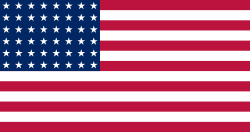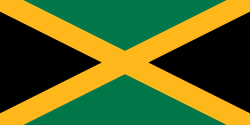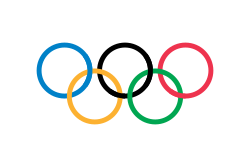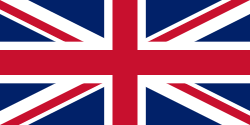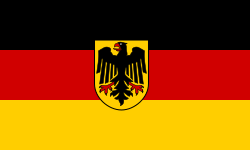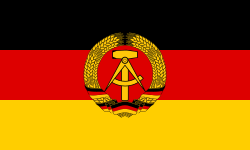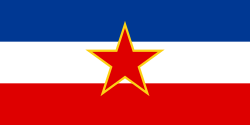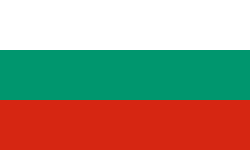Pietro Mennea
| Pietro Mennea | |
|---|---|
 Pietro Mennea v roce 1972 | |
| Osobní informace | |
| Rodné jméno | Pietro Paolo Mennea |
| Narození | 28. června 1952 Barletta, Itálie |
| Úmrtí | 21. března 2013 (ve věku 60 let) Řím, Itálie |
| Stát | |
| Výška | 180 cm |
| Hmotnost | 73 kg |
| Kariéra | |
| Disciplína | 100 m, 200 m, 400 m |
| Účasti na LOH | 1972, 1976, 1980, 1984, 1988 |
| Některá data mohou pocházet z datové položky. | |
| Přehled medailí | ||
|---|---|---|
| bronz | LOH 1972 | běh na 200 m |
| zlato | LOH 1980 | běh na 200 m |
| bronz | LOH 1980 | štafeta 4×400 m |
| Mistrovství světa v atletice | ||
| bronz | MS 1983 | běh na 200 m |
| stříbro | MS 1983 | štafeta 4×100 m |
| Mistrovství Evropy v atletice | ||
| bronz | ME 1971 | štafeta 4×100 m |
| stříbro | ME 1974 | běh na 100 m |
| zlato | ME 1974 | běh na 200 m |
| stříbro | ME 1974 | štafeta 4×100 m |
| zlato | ME 1978 | běh na 100 m |
| zlato | ME 1978 | běh na 200 m |
| Halové ME v atletice | ||
| zlato | HME 1978 | běh na 400 m |
Pietro Paolo Mennea (28. června 1952, Barletta – 21. března 2013, Řím[1]) byl italský atlet, jehož specializací byly sprinty na 100 a 200 metrů.
Kariéra
Jeho největším úspěchem bylo vytvoření světového rekordu v běhu na 200 metrů ve vyšší nadmořské výšce v Ciudad de México v roce 1979. Světový rekord s hodnotou 19,72 s vydržel v rekordních tabulkách celých 16 let, než ho v roce 1996 překonal Michael Johnson. K červnu roku 2015 běželo rychleji pouze 9 atletů v historii. I po několika desítkách let zůstává tento výkon evropským rekordem a je nejstarším rekordem starého kontinentu v olympijských disciplínách. Po tři roky držel také rekord, zaběhnutý v nížině (19,96 s). Kromě toho byl držitelem nejrychlejšího času na neoficiální trati 150 metrů (ručně 14,8 s), ten překonal po 26 letech až Usain Bolt v květnu 2009.
Pětkrát reprezentoval na letních olympijských hrách (Mnichov 1972, Montreal 1976, Moskva 1980, Los Angeles 1984, Soul 1988). Největší úspěch zaznamenal v roce 1980 na olympiádě v Moskvě, kde vybojoval v čase 20,19 s zlatou medaili v běhu na 200 metrů a bronz ve štafetě na 4×400 metrů. Již na olympiádě v Mnichově vybojoval bronz.
Mezi jeho úspěchy patří také čtyři zlaté a jedna bronzová medaile, které získal ve sprintech na světových letních univerziádách (1973, 1975, 1979).[2] Po ukončení kariéry byl také několik let činný v politice (1999-2004). Byl poslancem Evropského parlamentu za italskou stranu Demokratů (I Democratici), kterou založil Romano Prodi.
Zemřel po dlouhé nevyléčitelné nemoci ve věku 60 let.[1]
Osobní rekordy
- 100 m 10,01 s
- 150 m 14,8 s (ruční měření, 1983)
- 200 m 19,72 s (1979) - Současný evropský rekord
Reference
- ↑ a b È morto Pietro Mennea. Per 16 anni primatista mondiale dei 200 metri. 24 ore [online]. 2013-03-21. Dostupné online. (italsky)
- ↑ WORLD STUDENT GAMES (UNIVERSIADE - MEN)
Externí odkazy
 Obrázky, zvuky či videa k tématu Pietro Mennea na Wikimedia Commons
Obrázky, zvuky či videa k tématu Pietro Mennea na Wikimedia Commons - Pietro Mennea na stránkách Světové atletiky (anglicky)
- Pietro Mennea v databázi Olympedia (anglicky)
- (italsky) Osobní webová stránka
Média použitá na této stránce
Olympic Rings without "rims" (gaps between the rings), As used, eg. in the logos of the 2008 and 2016 Olympics. The colour scheme applied here was specified in 2023 guidelines.
Olympic Rings without "rims" (gaps between the rings), As used, eg. in the logos of the 2008 and 2016 Olympics. The colour scheme applied here was specified in 2023 guidelines.
US Flag with 45 stars. In use 4 July 1896–3 July 1908. Created by jacobolus using Adobe Illustrator, and released into the public domain. This flag was used during the Spanish-American War.
US Flag with 45 stars. In use 4 July 1896–3 July 1908. Created by jacobolus using Adobe Illustrator, and released into the public domain. This flag was used during the Spanish-American War.
US Flag with 46 stars. In use 4 July 1908–3 July 1912. Created by jacobolus using Adobe Illustrator, and released into the public domain.
Other version: Image:US 46 Star Flag.svgUS Flag with 46 stars. In use 4 July 1908–3 July 1912. Created by jacobolus using Adobe Illustrator, and released into the public domain.
Other version: Image:US 46 Star Flag.svgUS Flag with 48 stars. In use for 47 years from July 4, 1912, to July 3, 1959.
The Canadian Red Ensign used between 1921 and 1957.
This image has compared for accuracy (mainly colors) using an image from World Statesmen. The only change is making the maple leaves green from red. This image has compared for accuracy (mainly colors) using an image from World Statesmen. The most recent version of this image has changed the harp into one with a female figure; see [http://flagspot.net/flags/ca-1921.html FOTW
(c) I, Cmapm, CC BY-SA 3.0
The flag of the Soviet Union (1955-1991) using a darker shade of red.

(c) I, Cmapm, CC BY-SA 3.0
The flag of the Soviet Union (1955-1991) using a darker shade of red.

Flag of Jamaica. “The sunshine, the land is green, and the people are strong and bold” is the symbolism of the colours of the flag. GOLD represents the natural wealth and beauty of sunlight; GREEN represents hope and agricultural resources; BLACK represents the strength and creativity of the people. The original symbolism, however, was "Hardships there are, but the land is green, and the sun shineth", where BLACK represented the hardships being faced.
Olympijská vlajka
Bundesdienstflagge (Flag of the federal authorities of Germany). Under German law, federal states, municipalities, institutions or private persons are not allowed to use this flag.
Flag of Portugal, created by Columbano Bordalo Pinheiro (1857-1929), officially adopted by Portuguese government in June 30th 1911 (in use since about November 1910).
Flag of the Socialist Federal Republic of Yugoslavia (1946-1992).
The design (blazon) is defined in Article 4 of the Constitution for the Republic of Yugoslavia (1946). [1]
This is the national flag of Belgium, according to the Official Guide to Belgian Protocol. It has a 13:15 aspect ratio, though it is rarely seen in this ratio.
Its colours are defined as Pantone black, Pantone yellow 115, and Pantone red 032; also given as CMYK 0,0,0,100; 0,8.5,79,0; and 0,94,87,0.Vlajka České republiky. Podoba státní vlajky České republiky je definována zákonem České národní rady č. 3/1993 Sb., o státních symbolech České republiky, přijatým 17. prosince 1992 a který nabyl účinnosti 1. ledna 1993, kdy rozdělením České a Slovenské Federativní republiky vznikla samostatná Česká republika. Vlajka je popsána v § 4 takto: „Státní vlajka České republiky se skládá z horního pruhu bílého a dolního pruhu červeného, mezi něž je vsunut žerďový modrý klín do poloviny délky vlajky. Poměr šířky k její délce je 2 : 3.“
Flag of Serbia and Montenegro, was adopted on 27 April 1992, as flag of Federal Republic of Yugoslavia (1992-2003).
Flag of Serbia and Montenegro, was adopted on 27 April 1992, as flag of Federal Republic of Yugoslavia (1992-2003).
Zelený pruh má znázorňovat většinové katolické obyvatelsto Irska, oranžový pruh reprezentuje protestantskou menšinu a bílý pruh uprostřed znázorňuje mír a harmonii mezi nimi.





